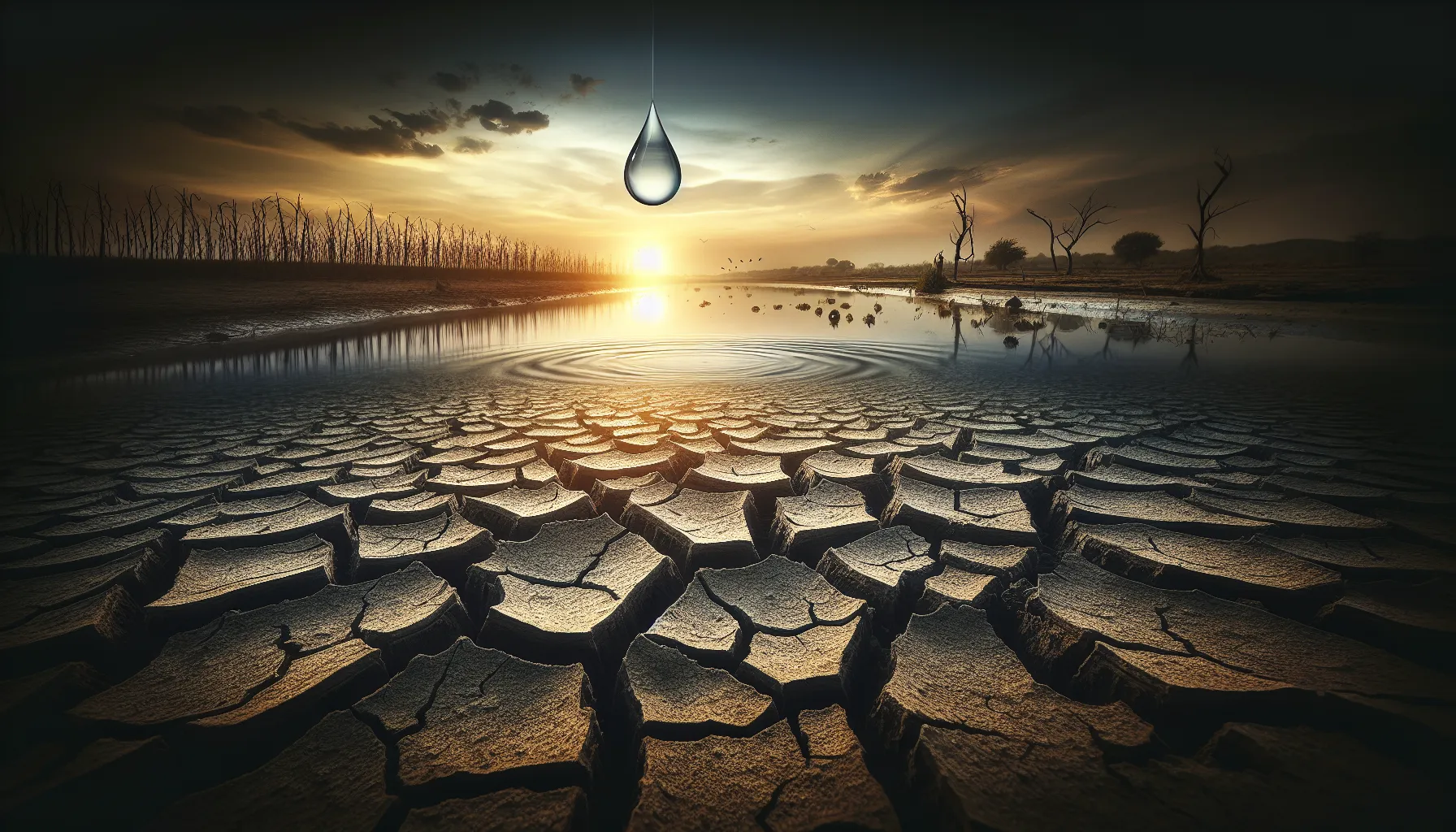Welcome to our IELTS Reading practice test focused on the critical issue of climate change and freshwater scarcity. This comprehensive test will challenge your reading skills while providing valuable insights into one of the most pressing environmental concerns of our time.
 Climate change impacts on water resources
Climate change impacts on water resources
Introduction
Climate change and freshwater scarcity are interconnected global challenges that affect millions of people worldwide. This IELTS Reading practice test will assess your ability to comprehend complex information, identify key details, and draw conclusions from academic texts related to this crucial topic.
IELTS Reading Test: Climate Change and Freshwater Scarcity
Passage 1 – Easy Text
Climate change is one of the most significant challenges facing our planet today. Its impacts are far-reaching and affect various aspects of our lives, including the availability of freshwater resources. As global temperatures rise, the hydrological cycle is disrupted, leading to changes in precipitation patterns, increased evaporation, and altered river flows.
One of the most visible effects of climate change on freshwater resources is the melting of glaciers and snow cover in mountainous regions. These natural reservoirs have traditionally provided a steady supply of water to rivers and streams during dry seasons. However, as temperatures increase, glaciers are retreating at an unprecedented rate, threatening the long-term water security of millions of people who depend on glacier-fed rivers.
In addition to changes in water quantity, climate change also affects water quality. Rising temperatures promote the growth of algae and bacteria in water bodies, potentially making them unsuitable for human consumption or ecosystem health. Moreover, extreme weather events such as floods and droughts, which are becoming more frequent due to climate change, can lead to water contamination and infrastructure damage.
The impact of climate change on freshwater resources is not uniform across the globe. Some regions may experience increased rainfall and flooding, while others face prolonged droughts and water scarcity. This uneven distribution of water resources poses significant challenges for water management and international cooperation.
As the world population continues to grow and urbanization accelerates, the demand for freshwater is expected to increase substantially in the coming decades. This growing demand, coupled with the impacts of climate change, puts enormous pressure on already stressed water resources. It is crucial for governments, organizations, and individuals to take action to mitigate climate change and adapt to its impacts on freshwater availability.
Questions 1-7
Do the following statements agree with the information given in the reading passage?
Write:
TRUE if the statement agrees with the information
FALSE if the statement contradicts the information
NOT GIVEN if there is no information on this
- Climate change only affects the quantity of freshwater resources, not the quality.
- Melting glaciers pose a threat to long-term water security for millions of people.
- Extreme weather events can lead to water contamination.
- The impact of climate change on freshwater resources is uniform across the globe.
- Urban areas are less affected by water scarcity than rural areas.
- The demand for freshwater is expected to decrease in the coming decades.
- Individual actions can contribute to mitigating climate change impacts on freshwater availability.
Passage 2 – Medium Text
The intricate relationship between climate change and freshwater scarcity presents a formidable challenge to global water security. As the Earth’s climate system undergoes rapid transformations, the repercussions on the hydrological cycle are becoming increasingly evident and concerning. This complex interplay manifests in various ways, each contributing to the growing crisis of freshwater availability.
One of the most significant impacts of climate change on freshwater resources is the alteration of precipitation patterns. Climate models project that while some regions may experience increased rainfall, others will face prolonged periods of drought. This spatial and temporal variability in precipitation poses significant challenges for water resource management, as traditional methods of water storage and distribution may no longer be sufficient to meet the changing demands.
The cryosphere, encompassing the Earth’s snow and ice cover, plays a crucial role in freshwater availability for many regions. However, rising global temperatures are causing rapid melting of glaciers and reduction in snowpack. This phenomenon not only affects the immediate water supply but also has long-term implications for river discharge and groundwater recharge. In many mountainous areas, the loss of glacier mass is leading to a shift in peak river flows, with potential consequences for agriculture, hydropower generation, and ecosystem health.
Climate change also exacerbates water quality issues. Warmer water temperatures promote the growth of harmful algal blooms and increase the concentration of pollutants. Additionally, sea-level rise induced by climate change leads to saltwater intrusion in coastal aquifers, rendering freshwater sources unusable for human consumption and agriculture. These water quality challenges further compound the issues of water scarcity and put additional strain on water treatment infrastructure.
The impact of climate change on freshwater resources is not limited to surface water. Groundwater systems, which provide a significant portion of the world’s freshwater supply, are also vulnerable to climate change effects. Changes in precipitation patterns and increased evapotranspiration can alter groundwater recharge rates, potentially leading to the depletion of aquifers. Moreover, in coastal areas, saltwater intrusion threatens the quality of groundwater resources, further reducing the available freshwater supply.
As the global population continues to grow and economic development accelerates, the demand for freshwater is projected to increase substantially. This growing demand, coupled with the impacts of climate change on water resources, creates a perfect storm for water scarcity. The situation is particularly dire in arid and semi-arid regions, where water resources are already under stress.
Addressing the challenge of climate change and freshwater scarcity requires a multifaceted approach. Mitigation strategies to reduce greenhouse gas emissions are crucial to slow the pace of climate change and its impacts on water resources. Simultaneously, adaptation measures such as improving water use efficiency, implementing water-sensitive urban design, and developing drought-resistant crop varieties are essential to build resilience in water resource management.
Questions 8-13
Choose the correct letter, A, B, C, or D.
-
According to the passage, which of the following is a major impact of climate change on freshwater resources?
A) Uniform increase in rainfall across all regions
B) Alteration of precipitation patterns
C) Decreased evaporation rates
D) Stabilization of river flows -
The term “cryosphere” in the passage refers to:
A) The Earth’s atmosphere
B) Underground water reserves
C) The Earth’s snow and ice cover
D) Oceanic water bodies -
How does climate change affect groundwater systems?
A) It increases groundwater recharge rates uniformly
B) It has no impact on groundwater systems
C) It can alter groundwater recharge rates and lead to aquifer depletion
D) It only affects surface water, not groundwater -
What is the effect of sea-level rise on coastal freshwater resources?
A) It increases freshwater availability
B) It leads to saltwater intrusion in coastal aquifers
C) It has no effect on coastal freshwater resources
D) It improves water quality in coastal areas -
According to the passage, which regions are most vulnerable to water scarcity due to climate change?
A) Tropical regions
B) Polar regions
C) Arid and semi-arid regions
D) Temperate regions -
What does the passage suggest as a solution to address climate change and freshwater scarcity?
A) Focusing solely on mitigation strategies
B) Implementing only adaptation measures
C) Ignoring the problem until it becomes more severe
D) A multifaceted approach including both mitigation and adaptation strategies
Passage 3 – Hard Text
The nexus between climate change and freshwater scarcity represents one of the most complex and pressing challenges of the 21st century. As anthropogenic activities continue to alter the Earth’s climate system, the ramifications on global water resources are becoming increasingly pronounced and multifaceted. This intricate interplay between climatic variables and hydrological processes necessitates a comprehensive understanding of both the direct and indirect impacts on freshwater availability and quality.
The primary mechanism through which climate change affects freshwater resources is the perturbation of the global hydrological cycle. Elevated atmospheric temperatures lead to increased evaporation rates and alterations in atmospheric circulation patterns, resulting in a redistribution of precipitation on both spatial and temporal scales. This phenomenon manifests as intensified hydrological extremes, with some regions experiencing more frequent and severe droughts, while others face an increased incidence of flooding events. The non-stationarity introduced by climate change challenges traditional water management paradigms, which have historically relied on the assumption of hydrological stationarity for infrastructure design and operational planning.
One of the most significant and immediate impacts of climate change on freshwater resources is the accelerated melting of the cryosphere. Glaciers and ice sheets, which serve as crucial freshwater reservoirs for many regions, are experiencing unprecedented rates of mass loss. This rapid depletion not only affects the immediate water supply but also has profound implications for long-term water security. The altered timing and magnitude of glacial meltwater contributions to river systems disrupt established hydrological regimes, affecting ecosystems, agriculture, and hydropower generation. Moreover, the loss of glacial mass contributes to sea-level rise, exacerbating saltwater intrusion in coastal aquifers and further compromising freshwater resources in low-lying areas.
Climate change also exerts a substantial influence on water quality, compounding the challenges associated with freshwater scarcity. Warmer water temperatures promote the proliferation of harmful algal blooms and increase the metabolic rates of aquatic organisms, leading to reduced dissolved oxygen levels. Additionally, altered precipitation patterns and increased frequency of extreme weather events can result in heightened erosion and sediment transport, affecting water turbidity and the concentration of pollutants. These water quality issues not only impact ecosystem health but also necessitate more advanced and costly water treatment processes for human consumption.
The interplay between climate change and freshwater resources extends beyond surface water systems to include groundwater dynamics. Changes in precipitation patterns, coupled with increased evapotranspiration rates, can significantly alter groundwater recharge processes. In many regions, particularly those reliant on fossil aquifers, climate change may exacerbate existing overexploitation issues, leading to irreversible depletion of groundwater resources. Furthermore, in coastal areas, sea-level rise induces saltwater intrusion into aquifers, rendering freshwater sources unusable and potentially causing long-term damage to these vital underground reservoirs.
The impacts of climate change on freshwater resources are not uniformly distributed across the globe, with certain regions experiencing disproportionate effects. Arid and semi-arid areas, already characterized by water scarcity, are particularly vulnerable to climate change-induced alterations in hydrological patterns. Similarly, small island developing states face existential threats from sea-level rise and saltwater intrusion, jeopardizing their limited freshwater resources. This uneven distribution of impacts underscores the need for context-specific adaptation strategies and highlights the potential for climate change to exacerbate existing water-related inequalities.
Addressing the challenge of climate change and freshwater scarcity requires a multifaceted and integrated approach. Mitigation efforts aimed at reducing greenhouse gas emissions are crucial for limiting the long-term impacts on water resources. Concurrently, adaptation strategies must be implemented to enhance resilience in water resource management. These may include the development of climate-resilient infrastructure, implementation of water-sensitive urban design principles, and adoption of advanced technologies for water conservation and reuse. Moreover, the complexity of the issue necessitates interdisciplinary collaboration and the integration of climate science, hydrology, and socio-economic considerations in water resource planning and management.
The intersection of climate change and freshwater scarcity presents a formidable challenge to global water security and sustainable development. As the impacts of climate change continue to unfold, it is imperative that policymakers, scientists, and stakeholders work collaboratively to develop innovative solutions and adaptive management strategies. Only through a concerted and holistic approach can we hope to mitigate the impacts of climate change on freshwater resources and ensure water security for future generations.
Questions 14-20
Complete the summary below.
Choose NO MORE THAN TWO WORDS from the passage for each answer.
Climate change significantly impacts freshwater resources through various mechanisms. The primary effect is the disruption of the global (14)__, leading to changes in precipitation patterns and increased evaporation. This results in more frequent (15)__ in some areas and flooding in others. The melting of (16)__ is another major concern, affecting both immediate water supply and long-term water security. Climate change also influences water quality by promoting the growth of (17)__ and altering sediment transport.
Groundwater systems are affected through changes in recharge processes and the depletion of (18)__. In coastal areas, (19)__ poses a significant threat to freshwater aquifers. The impacts of climate change on water resources are not evenly distributed, with (20)__ being particularly vulnerable. Addressing these challenges requires both mitigation efforts to reduce greenhouse gas emissions and adaptation strategies to enhance resilience in water resource management.
Questions 21-26
Complete the sentences below.
Choose NO MORE THAN THREE WORDS from the passage for each answer.
-
The assumption of __ in traditional water management is challenged by climate change.
-
The altered timing and magnitude of __ contributions disrupt established hydrological regimes.
-
Warmer water temperatures lead to reduced __ levels in water bodies.
-
Climate change may exacerbate the overexploitation of __ in many regions.
-
__ face existential threats from sea-level rise and saltwater intrusion.
-
Addressing climate change and freshwater scarcity requires __ collaboration and the integration of various scientific disciplines.
Answer Key
Passage 1 (Questions 1-7)
- FALSE
- TRUE
- TRUE
- FALSE
- NOT GIVEN
- FALSE
- TRUE
Passage 2 (Questions 8-13)
- B
- C
- C
- B
- C
- D
Passage 3 (Questions 14-26)
- hydrological cycle
- droughts
- glaciers and ice sheets
- harmful algal blooms
- fossil aquifers
- sea-level rise
- arid and semi-arid areas
- hydrological stationarity
- glacial meltwater
- dissolved oxygen
- fossil aquifers
- Small island developing states
- interdisciplinary
This IELTS Reading practice test on “Climate Change and Freshwater Scarcity” provides a comprehensive assessment of your reading skills while exploring a critical global issue. By tackling these passages and questions, you’ll not only improve your IELTS performance but also gain valuable insights into the complex relationship between climate change and water resources.
Remember to practice time management and develop strategies for quickly identifying key information in the texts. Pay close attention to the different question types and the specific instructions for each. With consistent practice and a focus on improving your weaknesses, you’ll be well-prepared for the IELTS Reading test.
For more practice on related topics, check out our articles on the impact of climate change on global freshwater availability and how climate change is affecting water availability. These resources will further enhance your understanding of this crucial subject and provide additional IELTS preparation materials.


